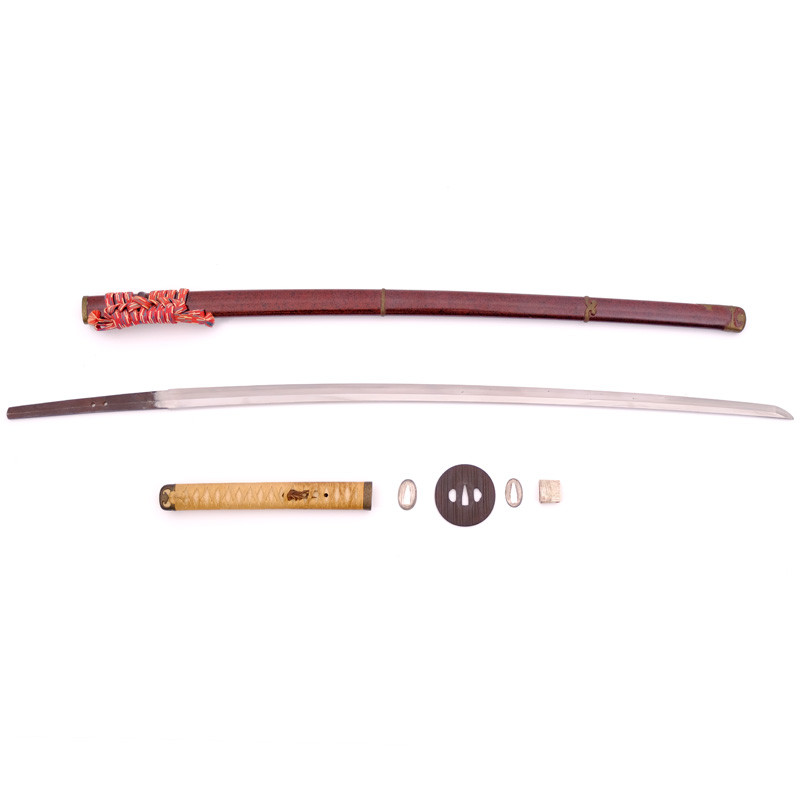


















More informations about this product
| Total Weight | 1.548 kg | |
| Weight without Saya | 1.213 kg | |
| Blade Weight | 0.866 kg | |
| Full Blade length (Toshin) | 105.9 cm | |
| Nagasa | 84.20 cm | |
| Nakago Length | 21.90 cm | |
| Sori (curvature) | 1.65 cm | |
| Kissaki Length | 2.50 cm | |
| Moto Haba | 2.91 cm | |
| Saki Haba | 1.67 cm | |
| Moto Kasane | A = 0.69 cm B = 0.73 cm |
|
| Saki Kasane | A = 0.45 cm B = 0.47 cm |
|
| Curvature | Tori Zori | |
| Type Kissaki | Chu Kissaki | |
| Blade Structure | Shinogi Zukuri (diamond shaped) | |
| Mune | Iori Mune (triangular) | |
| Hamon | Suguha in Nioi Deki, with Ashi, Yo and Nijuba | |
| Hada | Ko Itame and Masame | |
| Boshi | Ko maru Kaeri | |
| Nakago | Tachi Mei signed Face Ura, Suri Age, 2 Mekugi Hana, Taka No Ha Yasurime, form Ichimonji Gata, Nakago Jiri in Ha Agari Kuri Jiri | |
| Saya | Length of 90.2 cm for a weight of 333 g. Glossy dark Bordeaux lacquer with black dots. Sageo silk tricolor (red, beige, testukon). Kuchi Gane, Seme Gane and Ichizuki with the pattern Karakusa in suite with the Fuchi Kashira, Kurigata steel. | |
| Tsuka & Tosogu (Tsuba, Menuki, Fuchi Kashira) |
- Tsuka: 28.4 cm length, 160g weight. Same white, Tsumami Maki braid in beige silk, Menuki apparent Ebi crayfish pattern - Fuchi Kashira: Karakusa motif en suite with sheath parts (Handachi assembly) - Tsuba : Maru Gata border Kaku Mimi Gata, signed by Kuni Yasu, vertical relief pattern, dimensions 8.07 x 8.3 x 0.45 cm, weight 145g, presence of Kogai and Kozuka Hana. - Habaki: Double Silver Habaki, 28g weight, Neko Gaki vertical on top and horizontal on bottom. - Menuki: - Seppa: 2 Silver Seppa total weight 8g |
|
| Study & Team Review |
The line of Kanetsune 兼 常 blacksmiths is a prestigious lineage dating back to the early Muromachi period, around the end of the 14th century. The 1st generation of Kanetsune was active in the Nara Yamato tradition, either from the Yamato Senju'in school or from the Tegai Kanenaga line, depending on the theories. He would then have settled in the city of Shimouchi, Seki, in the province of Mino (present-day Gifu Province) towards the Oei era (1394-1428). |
|
Share your opinion
error Your review appreciation cannot be sent
feedback Report comment
check_circle Report sent
error Your report cannot be sent